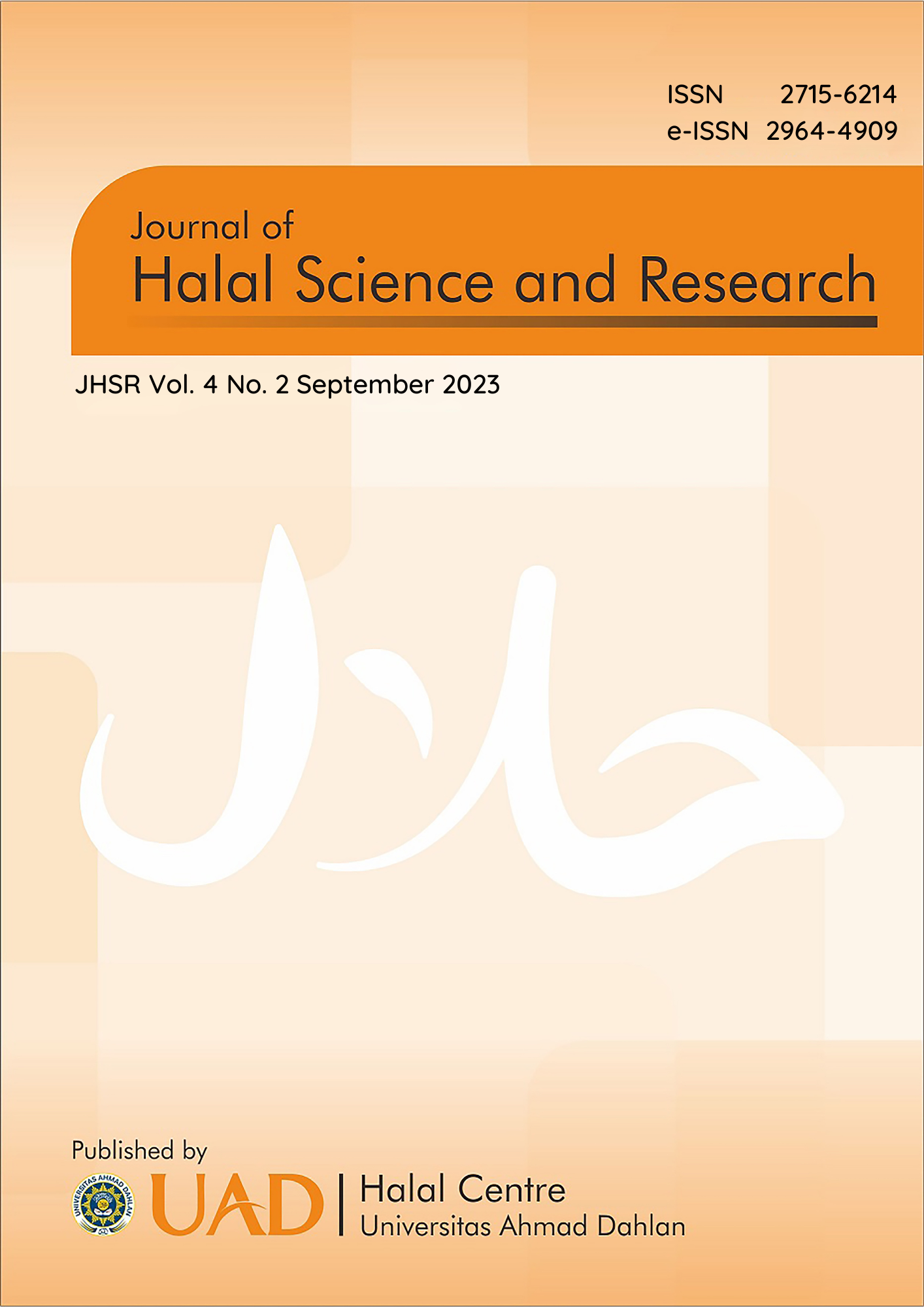Analysis of the application of good manufacturing practices (GMP) and sanitation standard operating procedures (SSOP) for products "Emping Singkong Super Telur Bu Siti" in Bantul, Yogyakarta
DOI:
https://doi.org/10.12928/jhsr.v4i2.7478Abstract
Cassava (Manihot esculenta Crantz) is used by Mrs. Siti to be processed into cassava chips. In processing a food product, it is mandatory to implement employee sanitation and hygiene to ensure food safety. Therefore, it is necessary to evaluate the implementation of Good Manufacturing Practices (GMP) analysis based on the Regulation of the Minister of Industry of the Republic of Indonesia No. 75 of 2010 and evaluation analysis of the implementation of Sanitation Standard Operating Procedures. (SSOP) based on Head of BPOM Regulation Number HK.03.1.23.04.12.2207 of 2012 to determine the implementation of GMP and SSOP. The data collection methods used in this practical work report are observation, interviews, and literature studies. The analysis technique is by the fishbone method. The analysis results of GMP implementation show six aspects of critical (critical) deviations, including buildings, materials, final products, employees, and elimination of nuisance pests from processing units. The results of the analysis of SSOP implementation show that there are three aspects that are not in accordance with the provisions, which should include the condition and cleanliness of surfaces in contact with food ingredients, preventing cross-contamination, and eradicating nuisance pests. Based on the results of the fishbone diagram analysis, it can be concluded that there is a need for improvement in the cassava chip production process. Namely, employees are required to wash their hands before and after the production process, clean up trash around the factory, and maintain the cleanliness of raw materials, such as washing vegetables before use. So, there needs to be socialization regarding GMP and hygiene.
Keywords: GMP, SSOP, Sanitation, Hygiene, Fishbone
Downloads
Published
Issue
Section
License
Copyright (c) 2023 Universitas Ahmad Dahlan

This work is licensed under a Creative Commons Attribution-NonCommercial-ShareAlike 4.0 International License.
Authors who publish with JHSR (Journal of Halal Science and Research) agree to the following terms:
1. Authors retain the copyright and grant Universitas Ahmad Dahlan right of first publication with the work simultaneously licensed under a Creative Commons Attribution-NonCommercial-ShareAlike 4.0 License (CC BY-NC-SA 4.0) that allows others to share (copy and redistribute the material in any medium or format) and adapt (remix, transform, and build upon the material) the work for any purpose, even commercially with an acknowledgement of the work's authorship and initial publication in Universitas Ahmad Dahlan.
2. Authors are able to enter into separate, additional contractual arrangements for the non-exclusive distribution of the journal's published version of the work (e.g., post it to an institutional repository or publish it in a book), with an acknowledgement of its initial publication in Universitas Ahmad Dahlan.
3. Authors are permitted and encouraged to post their work online (e.g., in institutional repositories or on their website) prior to and during the submission process, as it can lead to productive exchanges, as well as earlier and greater citation of published work (See The Effect of Open Access).

This work is licensed under a Creative Commons Attribution-NonCommercial-ShareAlike 4.0 International License.




